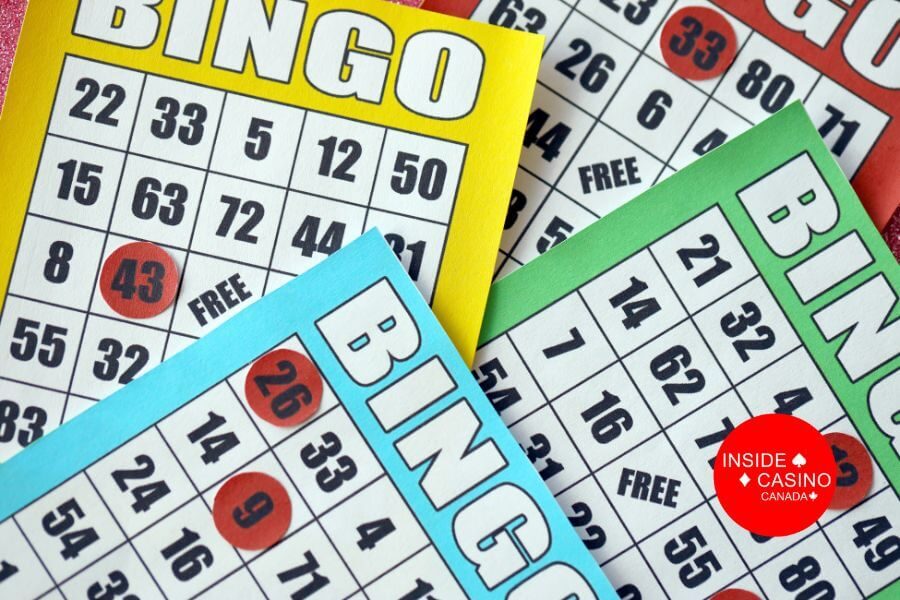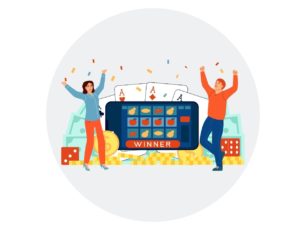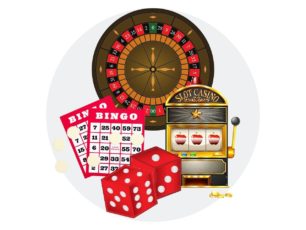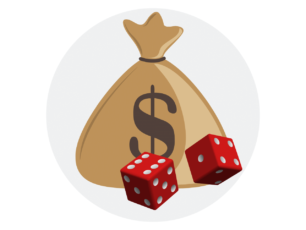How Does Bingo Work?
Before anything else, it's important to first get a grasp of the basic mechanics of how to play bingo. In Canadian bingo houses, there are two main variants of the game that are most commonly played: a 90-ball variant and a 75-ball variant.
Numbers are called out by the bingo operator at random, with each number in the pool having an equal chance of being called as every other number. If a called number does match with a number on the ticket (or card, as it is called in 75-ball bingo), the player must mark this with a dauber on their ticket.
A player wins if they manage to be the first to daub all of the numbers on a row of their bingo ticket. This win condition also extends to being the first to two rows and so on until the full house, which is 3 filled rows in 90-ball bingo and 5 filled rows in 75-ball bingo.
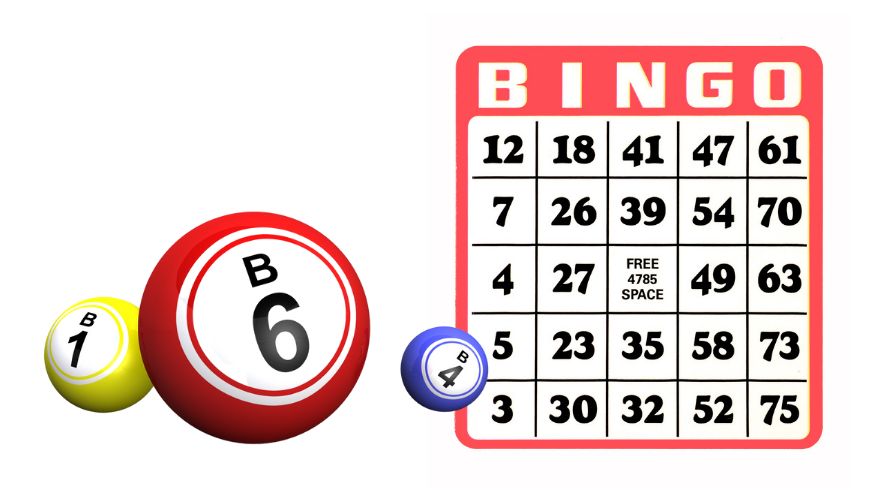
Chance and Fairness in Bingo
Now that we know how bingo works for the most part, it’s now time to get into the maths of the game. From most perspectives, online bingo is very much a game of chance, with your odds of winning being almost completely dependent on having the right combination of numbers on your ticket at the right time.
At this point, we should probably also repeat the following statement, the same way we have for every other gambling game under the sun: Canadian bingo games can be rigged, but licensed games are always made to play fairly. The gambling industry, despite its perception to outsiders, has many regulatory and security measures in place to ensure that their games are, while still tipped towards the house at the end of the day, operating within the bounds of correct and solid mathematical models that ensure the game is almost perfectly random.
And in bingo, these mathematical models are actually quite simple (if a bit large, as we will see later). As an example, let’s take a look at a typical 75-ball bingo card:
| Sample 75-Ball Bingo Ticket | ||||
|---|---|---|---|---|
| B | I | N | G | O |
| 1 | 17 | 31 | 46 | 61 |
| 6 | 20 | 35 | 49 | 63 |
| 9 | 24 | Free | 51 | 69 |
| 10 | 25 | 40 | 56 | 70 |
| 13 | 30 | 44 | 58 | 75 |
In a 75-ball bingo card, each column can have 5 semi-random numbers; we call them “semi-random” here because the numbers that show up in each column can only be from a fixed range of numbers:
- the “B” column can only have numbers from 1-15;
- the “I” column can only have numbers from 16-30;
- the “N” column can only have numbers from 31-45;
- the “G” column can only have numbers from 46-60; and
- the “O” column can only have numbers from 61-75.
With this knowledge, we can do a few simple multiplications to figure out the number of possible bingo cards that can be made in the 75-ball bingo format. We go about this by first figuring out how many combinations there are in a single column. We already know that there are 15 possible numbers that can be in each column, and no number can appear twice, the number of possible number combinations in a column is 15*14*13*12*11 = 360,360.
Since the “N” column has a free space in the middle, our calculations will be slightly different since we are only filling 4 numbers. This gives a possible number of combinations at 15*14*13*12 = 32,760.
The 75-ball bingo card has 4 full columns and 1 column with free space. Hence, our final calculation becomes:
360360 * 360360 * 360360 * 360360 * 32760 = 552,446,474,061,128,648,601,600,000
Which works out to around 552 septillion or 5.52 x 10^26 if you want to go with scientific notation. Now, this does appear to be a very large number, but seeing it here on its own doesn’t really make a lot of sense until we try to put it into perspective. So let’s do just that—according to estimates from the European Space Agency, there are 1 septillion stars in the universe. This means that there are not only more, but 552 times more possible combinations of 75-ball bingo cards than there are stars in our entire universe!
So yes, there are quite a lot of different combinations that could show up on your bingo cards. But what does this mean in the context of fairness? To get a more substantial answer, let’s take a look at a couple of bingo “strategies”.
Bingo “Strategies” (And Why They Don’t Work)
As we touched on at the start of this guide, there have been a few people who have attempted to float the idea that there are deeper gambling strategies underneath the mechanics of bingo that players could take advantage of and improve their odds of winning one of the game’s coveted payouts.
One of the most notable and popular of these bingo strategies was invented by Joseph Granville, a writer and financial analyst who held fairly significant success in the American stock market. He developed a theory on bingo that states that tickets that have numbers with a wide range of even and odd as well as high and low tickets are more likely to be called throughout the game and therefore improve winning chances.
Another theory developed by statistician Leonard Tippett also became relatively popular. This theory states that numbers closer to the median of the bingo pool—38 in 75-ball bingo and 45 in 90-ball bingo—become more likely to be called the longer a game goes on. The theory, therefore, recommends choosing tickets with numbers close to the boundaries of the number pool for short games and numbers close to the median for longer games.
But therein lies the problem: you can’t choose your bingo tickets. Unlike other casino games, bingo does not give you any decision-making options outside of simply choosing how many tickets you want to buy for the game.
This is barring mention of the very mechanics of bingo itself, which the two theories seem to have blatantly overlooked. As we touched on earlier, every number in the bingo pool has an equal chance of being called. In the case of 75-ball bingo, this means a 1/75 chance for all numbers in the first call, 1/74 in the second call, 1/73 in the third call, and so on.
What this means is that our two theories already miss the mark on their assumptions of how the game works, thereby making them pretty bad strategies that we do not recommend you follow.
How Do You Win at Bingo?
So how do you actually win at Bingo? How is it possible that certain players manage to win more often than others?
Unfortunately, the answer really is about as simple as you think—players who land bingos more often simply have more cards. That is just a matter of fact. Considering bingo mechanics make it so that both the numbers that are called and the numbers that show up on players’ tickets are almost perfectly random, it stands to reason that the chance of actually landing a bingo depends on having enough of a number spread to get the right combination of cards at the right time.
Most of the people who actually win bingo games fairly often actually buy the maximum number of bingo cards that the game room allows, as this allows them to dominate the card pool and have the largest probability of winning.
Let’s try to put this into numbers. Suppose you bought in with 1 card to a game with 100 total cards in play. Let’s also suppose that one of those players bought in with 50 cards. Since we already know that the bingo numbers and the cards are completely random, all cards have a practically equal chance of winning.
With this in mind, then, your 1 ticket has a 1 in 100, or 1% chance of landing the bingo. By contrast, the player who bought 50 cards has a 50 in 100 or 50% chance of winning.
For those of you who expected a little bit more, we have to apologize—bingo really is as simple as that.
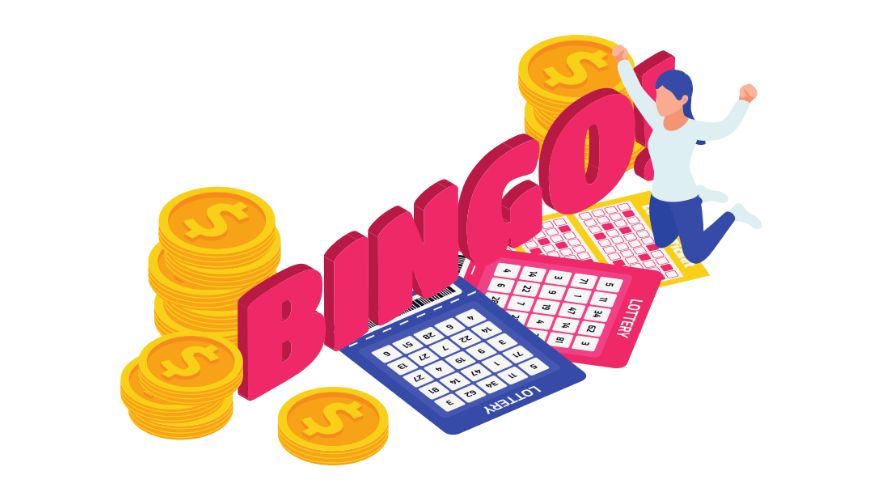
RTP and the Value of Winning
Before we go, however, there is one other aspect of winning bingo that most people tend to overlook, and that is the actual value that you can get from winning.
Sure, that player who maxed out the tickets they purchased on every game may have stood the biggest chance of winning; however, there is no way to tell from your point of view exactly how much money they are actually walking away with at the end of the day.
This brings us to the concept of RTP, or Return to Player. Generally speaking, this is the statistical percentage of the money that a gambling game collects from wagers that are paid out to players as winnings. As an example, the RTP of bingo games tends to hover around 70 to 85%; to put it into numbers, this means that $8,500 will eventually be paid out as winnings from a pool of collected wagers totalling $10,000.
However, we do have to emphasize that when these winnings are paid out is never clear. While bingo jackpots are technically all guaranteed when someone does end up landing the full house, the RTP here tends to fluctuate depending on how many tickets are bought in to actually win the whole thing.
This is partly observed by two metrics: liquidity and variance. In bingo, the variance is generally high as players have a chance to win any one of various prize tiers or nothing at all. The liquidity, however, is based on the amount of money in the game pool that is collected from bought tickets; this pushes variance even higher as the value of the prizes scales with the amount of money entering the game.
Wrap-Up: Actual Tips to Win at Bingo
We’ve learned a lot about bingo mechanics over the course of this article, and we’ve seen that fancy strategies, while they do seem cool, are not as mathematically sound as they seemed on the surface.
But of course, this being a bingo strategy guide, we aren’t going to leave you empty-handed. Below are some actual tips to win more at bingo.
Buy more tickets
As we mentioned earlier in the article, the more tickets you have, the greater the chance you will actually land a winning combination at bingo. The way this works boils down to simple probability, as every ticket in play has an equal chance to land a winning combination.
Avoid bingo rooms with lots of players
Besides increasing the number of tickets you buy, you can also increase your odds by playing at bingo rooms that don’t have a lot of tickets in play. The goal here is to take up a large enough portion of the ticket pool to give you a solid chance at winning.
Try other variants
Bingo game developers are always trying to come up with new and interesting ways to spice up the gameplay you know and love. Sometimes they will offer free bingo for players in Canada, to give you a taster. These novel variations of bingo games typically have more ways to win than the 1, 3, or 5 lines you may be used to with the typical 75-ball and 90-ball bingo games.
Have fun
At its core, bingo is meant to be a form of entertainment—a game to pass the time and enjoy with friends or strangers. In fact, bingo is arguably even more of a social experience compared to other games, which is why going in without any expectation of winning is the way to get the most value out of your bingo sessions.
